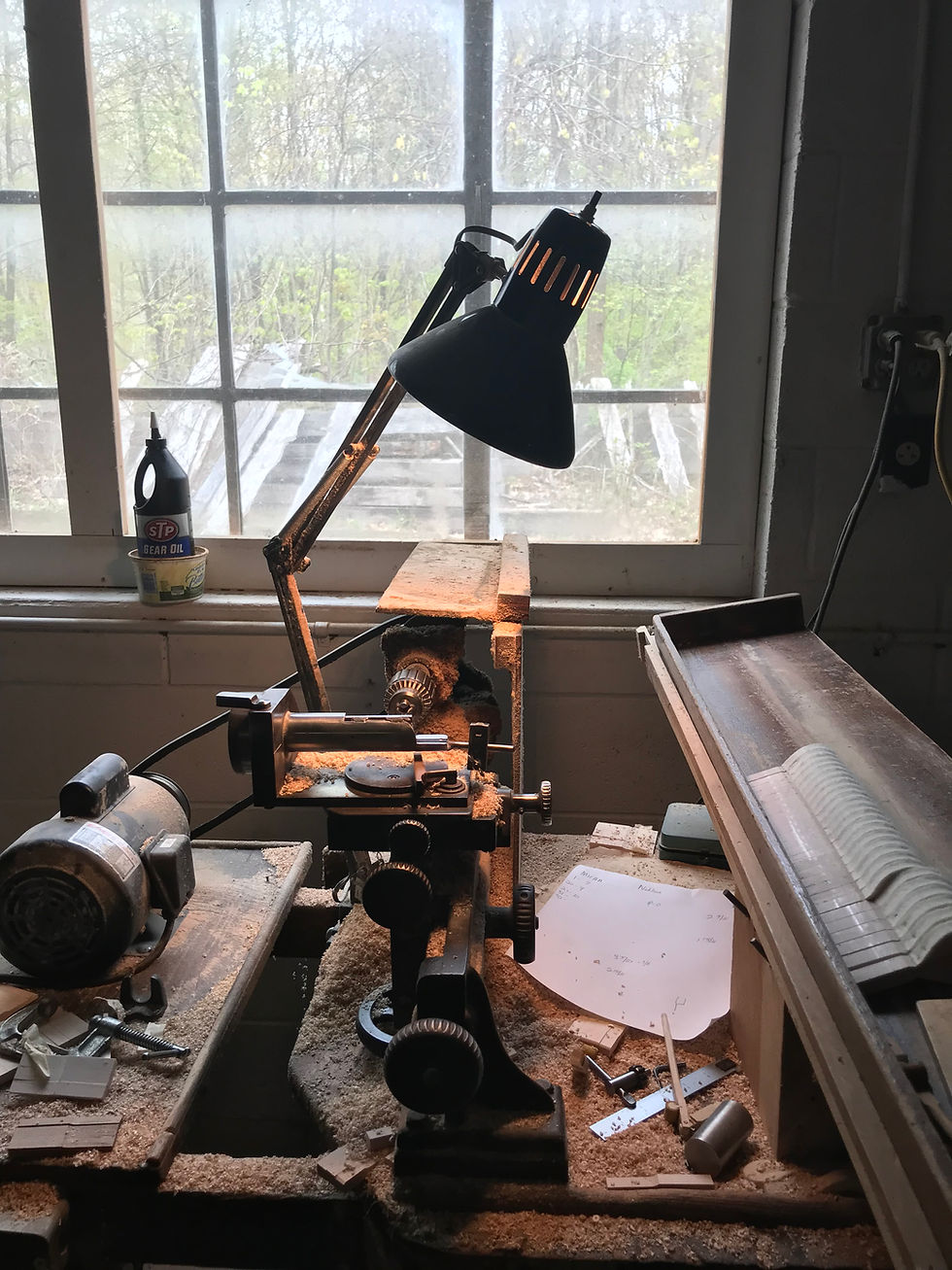Glue 101
- Hannah Beckett

- Sep 16, 2024
- 4 min read
By Jennifer Gold
Piano manufacturing involves the use of various types of glues to join different components and materials together. Some common types of glues used in piano manufacturing include hide glue, polyvinyl acetate (PVA) glue, epoxy resin, cyanoacrylate (CA) glue, and, in some cases, urea-formaldehyde glue.
The choice of glue in any situation depends on the specific application within the piano or scope of repairs, and the materials being bonded. Different glues may be used for assembling the wooden frame, attaching the soundboard, securing key components, or joining other parts of the piano. The goal is to achieve strong and durable bonds that can withstand the mechanical stresses and environmental conditions to which pianos are exposed.
Each type of glue has its own advantage and place in the piano-making or repair process, however, not all are necessary or even beneficial for the field.
So how do you decide what to carry with you?
First, it’s important to understand a glue’s working properties as well as its curing properties.
Working Properties: An adhesive's characteristics while in liquid form.
Working properties include:
Assembly Time: the amount of effective working time with the glue before it loses its fluidity
Clamp Time: the amount of time the glue must be clamped to fully cure
Cure Time: the time required for the glue to achieve its final bonded properties
Workability: ease of application regarding the glue in liquid form
Working Life: the period of usability once the glue has been dispensed from the container
Temperature Stability: the ability of the glue to withstand one or more cycles of freezing and thawing without deteriorating
Curing Properties: An adhesive's characteristics after it is fully cured and has achieved its final properites
Curing Properties include:
Gap-Filling Ability: the ability of an adhesive to fill surface and structural gaps as it cures
Reversibility: the ability of the glue to be returned to a fluid state after it has hardened, ie. with heat, a solvent, or both
Strength: the ability of a cured adhesive to resist various types of applied stress; tension, compression, torsion, flexion
Water Resistance: the ability of a cured glue to endure intermittent exposure to various levels of moisture at moderate temperatures without degradation
Creep: noticeable shifting or other movement of materials along a glue joint that the glue is unable to restrict (also known as cold flow)
Selecting the right type of glue for a particular project involves considering the materials you're bonding, the intended application, and the specific properties required for the bond. Here's a general guide to help you understand what type of glue bonds which materials:
Here are a few pro tips for working with glues in the field:
Make sure you have the correct applicator before starting the gluing process
Make sure you have a clean surface on which to work
If you are clamping, make sure the clamp is prepared before you start, and make sure you have something to put in between the clamp and the parts being clamped if necessary
When applying glue, also put a couple drops of the glue onto a piece of paper or other scrap so you can track the curing process and reference the scrap to know when the repair is ready to be replaced in the piano
Clean up any glue squeeze-out
Glue Storage Tips:
Make sure to always close the lid of whatever adhesive you’re using even while you use it, and wipe off the tip of the bottle when applicable. This helps avoid glue dry-out
Typically glues should be stored in a cool, dry, dark place
Some glues even like to be refrigerated for longevity
Check the label for information about shelf life and temperature sensitivity. Glue can curdle in high temperatures and freeze in low temperatures resulting in compromised glue. Shelf life varies, but note the specifics on the label and be sure to replace upon expiration.
Some glues are temperature sensitive and can only be used once and must be used immediately- aka epoxy. Epoxy storage is also important for this reason because it can cure in certain temperatures, or can be completely ruined in other temperatures
References:
Definitions come from The Glue Book by William Tandy Young

Jennifer Gold is a graduate of the North Bennet Street School, class of 2023, and a lifelong pianist. She is a Steinway Spirio technician and is currently on staff at Peabody University. In addition to her institutional work, she enjoys servicing pianos for her private clientele throughout the Baltimore, MD, region.



I wish I knew what the glue that major manufacturers use for gluing acrylic key tops to wood. Removing some of these factory glued key tops can be difficult, occasionally impossible as the plastic is bonded to the wood. Perhaps this is a version of an acetone based glue like Duco Cement.
In my tests there is a clear Gorilla Glue (non-expanding) that worked better than any others for plastic key tops when the key top was lightly sanded. This glue requires a light application of water to the wood for bonding.
PVE glue (or PVA-E glue) can be hard to find these days, but Franklin Titebond has a version called Melomine Glue that is about the same thing.